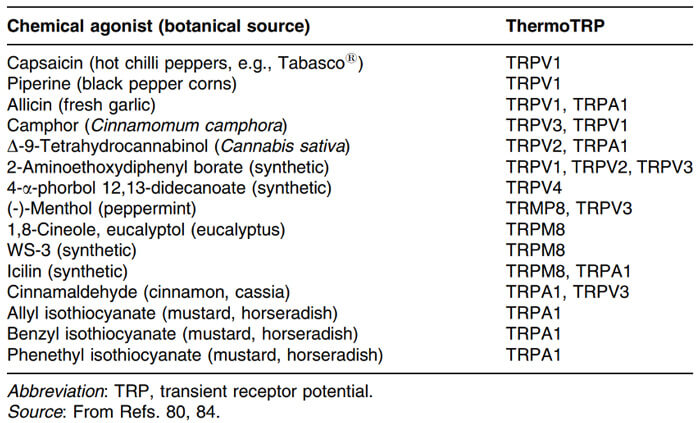Cooling Agents
The cooling sensation of shower gel on the skin comes from a series of chemicals called Cooling Agents. The cooling effect of these personal care products is due to the cooling agents. Cooling agents selectively stimulate cold-activated receptors in human skin or mucous membranes. Cold-activated receptors stimulate the human spinal cord and brain, making people feel cold.

- Definition
- Features
- Products
- Applications
- Examples
- Qualifications
- FAQs
- Case Study
- Online Inquiry

What is Cooling Agent?
Cooling agents are substances that produce a cooling sensation when taken orally or applied topically. Therefore, they are widely used in the food, cosmetics, and pharmaceutical industries. Cooling agents can be divided into two categories: natural (derived from plants) and synthetic (chemically synthesized). Natural cooling agents include eucalyptus oil, camphor oil, peppermint oil and menthol. Synthetic cooling agents include WS-3 and WS-23.
What are the Features of Cooling Agents?
Cooling Sensation
Cooling agents can produce a cooling or refreshing sensation on the skin or in the mouth.
Heat Resistance
Some cooling agents are heat stable and suitable for high temperature processes.
Safety
Some cooling agents are recognized as safe products for use in food and cosmetics.
Cooling Agents Product List
What are the Applications of Cooling Agents?

Sensory Enhancement
Cooling agents are often added to products such as fresheners to provide a refreshing, icy feeling.

Pain Relief
Some cooling agents, due to their analgesic properties, can temporarily relieve minor pain.

Cosmetic Applications
Cooling agents are often added to cosmetic products such as shampoos and shower gels to provide a refreshing, cooling sensation.

Oral Hygiene
Cooling agents are used in toothpaste and oral care products to provide a mild cooling effect and a refreshing sensation.
Examples
WS-3
WS-3 is a menthol derivative. But unlike menthol, WS-3 is virtually non-volatile, odorless and tasteless. WS-3 is one of the most commonly used cooling agents on the market.
WS-5
WS-5 is a menthol derivative. WS-5 has been found to be approximately two and a half times more cooling than WS-3, making it one of the strongest commercially available cooling agents.
WS-10
WS-10 is a proprietary cooling agent liquid blend. This easy-to-mix material allows manufacturers to avoid the problems caused by inadequate mixing of solids.
WS-12
WS-12 is a menthol derivative. WS-12 provides one of the strongest initial cooling effects and significantly longer lasting effects than conventional cooling agents such as WS-3 and WS-5.
Why Alfa Chemistry?
ISO 9001:2015
Alfa Chemistry is ISO 9001:2015 certified and focuses on collaboration and partnership.
QA & QC
Alfa Chemistry's QA (Quality Assurance) and QC (Quality Control) department oversees all production and quality systems.
On-time Delivery
Alfa Chemistry delivers high-quality products on time, meeting all customer needs.
Question and Answer
Case Study
Cooling Agents and Their Mechanism of Action
 Leffingwell, John C. Cosmetic Science and Technology (2009): 661.
Leffingwell, John C. Cosmetic Science and Technology (2009): 661.The interest in cooling agents is that they can eliminate the minty taste and volatile side effects (e.g., eye irritation) of menthol and are used in products such as aftershave. WS-5 [ethyl 3-(p-menthane-3-carboxamido)acetate] is one of the most cooling agents currently available in the market. Studies have shown that only highly purified WS-5 is suitable for flavoring applications, as less pure materials exhibit a strong bitter taste. WS-3 and WS-23 are the two most produced carboxamide cooling agents. They are widely used in flavorings, especially chewing gum, breath fresheners, candy, and oral care products. They are also used in cosmetics (e.g., aftershave).
Most of the knowledge about chemical stimulation of TRP activation comes from genetic expression of putative receptor domains and measurement of Ca2+ flux intensity by fluorescence imaging. Using this technique, 70 odorants and menthol-related substances were screened for activity against the recombinant cold menthol receptor TRPM 8 (mTRPM8) expressed in HEK293 cells. Although fluorescence measurement does not always translate to human perception scales, it has been used in industry to screen for promising new cooling agents.

